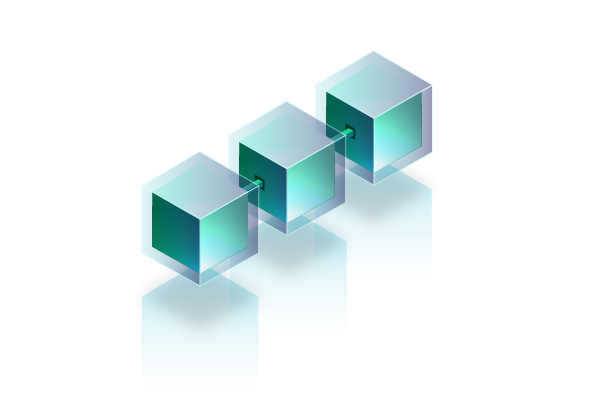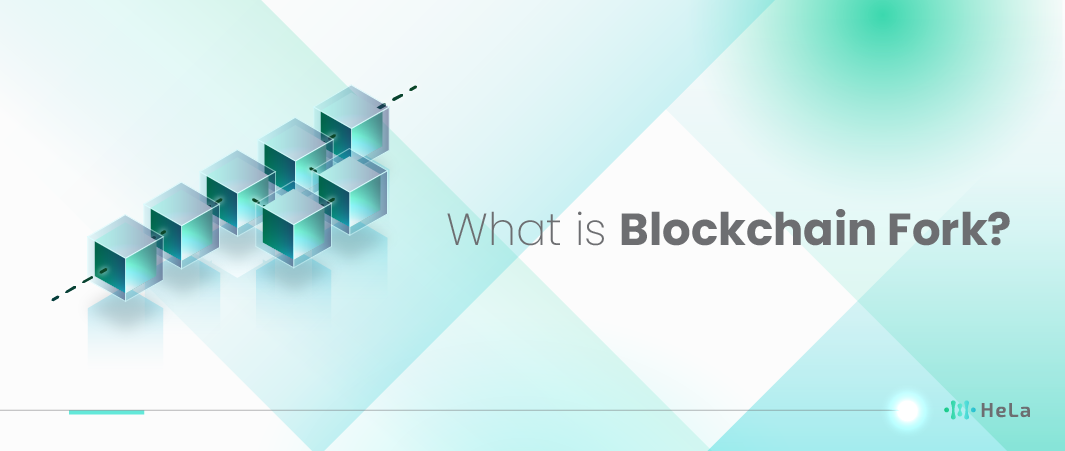When it comes to blockchain technology, one of the concepts that often surfaces is a “blockchain fork”. This term might sound complex or technical, but it’s crucial for anyone involved in digital currencies or blockchain technologies to understand. A blockchain fork represents a divergence in the blockchain network, which can significantly impact digital assets and the network’s future direction.
At its core, a blockchain fork happens when the community or a group of developers decides that changes must be made to the underlying code of a blockchain. This decision could be triggered by various factors, including security threats, new functionalities, or improvements to the system’s efficiency. Understanding these forks is essential not only for developers but also for investors and users of cryptocurrencies.
In this article, we’ll break down the concept of blockchain forks into more understandable parts, explore the different types of forks, and examine how these can influence the value and functionality of digital assets. Whether you are a seasoned crypto enthusiast or new to the digital currency world, this guide will provide valuable insights into the dynamics of blockchain forks.
What is a Blockchain Fork?
A blockchain fork represents a significant change in the protocol of a blockchain network, leading to the creation of two distinct versions of the ledger: one that operates under new rules and another that continues under the existing rules. This divergence typically occurs when developers propose updates to enhance functionality, improve security, or optimize the network, but it can also happen due to disagreements within the community about the future direction of the blockchain.
Also Read: Bitcoin Sentiment: From Enthusiasm to Mainstream Skepticism
When a fork happens, it essentially creates two parallel paths for the blockchain. Each path operates independently with its own set of rules and records. This is critical in decentralized systems like blockchain, where changes must be commonly agreed upon by the network participants. A fork is a reflection of the need for adaptability in technology, as well as the democratic and often contentious nature of the decision-making process in blockchain networks. This capability to fork not only allows for technological evolution and adaptation to new requirements but also poses challenges related to security, user consensus, and network stability.
Types of Blockchain Forks
Blockchain technology has introduced a unique mechanism known as “forking” to adapt and evolve over time. Forking in blockchain refers to a divergence in the blockchain network, which usually occurs when new governance rules or upgrades are introduced that not all nodes agree to implement. These changes can be crucial for the network’s scalability, security, and efficiency, leading to the development of two primary types of forks: hard forks and soft forks.
To better understand blockchain forks, let’s delve deeper into the two main types: hard forks and soft forks. Each plays a significant role in the evolution of blockchains and has different impacts on the ecosystem.
Hard Forks
A hard fork is a radical change to a network’s protocol that makes previously invalid blocks and transactions valid, or vice-versa. This type of fork requires all nodes or users to upgrade to the latest version of the protocol software. Hard forks are often conducted to add new functionalities to the blockchain, correct security risks found in older versions of the software, or reverse transactions (as seen in the Ethereum blockchain to reverse the DAO hack). The most notable aspect of a hard fork is that it is not backward compatible.
If not all nodes agree to the upgrade, it can lead to the creation of a new blockchain, as nodes running the old software will see the new transactions as invalid. This was the case with Bitcoin Cash, which split from Bitcoin in 2017 due to disagreements on block size, among other issues.
Soft Forks
Soft forks, in contrast, are backward-compatible changes to the blockchain. Only a majority of the miners need to upgrade the software; however, non-upgraded nodes will still see new blocks as valid. This type of fork is less disruptive and does not result in the creation of a new blockchain, but it can still introduce new features and improvements.
Soft forks require only a majority of the miners to accept the new rules, while the rest of the nodes (those not mining) will continue to operate as normal, unaware of the changes. An example of a soft fork is the Segregated Witness (SegWit) update implemented in Bitcoin in 2017, which was designed to increase block capacity by changing how data was stored in each block.
Understanding the intricacies of hard forks and soft forks is essential for navigating the complex landscape of blockchain technology. These mechanisms ensure that blockchains remain adaptable and can be updated to meet the changing demands of users and the technological environment. As blockchain technology continues to evolve, the role of forks will likely become even more significant in shaping the future of digital currencies and decentralized networks.
Reasons for Forks in Blockchain
Forks in blockchain technology refer to a divergence in the blockchain itself, creating two paths—one that follows the original rules and one that branches off with new rules. This phenomenon occurs due to various reasons:
Technical Upgrades
Blockchains often undergo technical upgrades to incorporate new features or enhance system performance. These changes might involve modifications to the consensus protocol, adjustments in block size, or the integration of new cryptographic techniques. Such upgrades typically aim to improve scalability, speed up transaction processing, or enhance the user experience. A fork occurs because these changes require nodes in the network to agree on a new version of the rules governing the blockchain. When not all participants agree to the upgrade, it can result in a permanent split, forming a new branch of the blockchain.
Security Fixes
Security is paramount in blockchain systems, and vulnerabilities can pose significant risks to the integrity and trustworthiness of the entire network. When developers discover security flaws, they may decide to implement urgent patches through a fork. This kind of fork is crucial for maintaining the security and operability of the blockchain, but it may lead to disagreements if not all stakeholders believe the changes are necessary or if the changes alter fundamental aspects of the protocol. The decision to fork under these circumstances is a balance between rapid response and broad consensus.
Disagreements in the Community
The decentralized nature of blockchain technology often leads to diverse opinions on its future direction. These disagreements can be about technical details, like block size or mining rewards, or broader issues like governance and regulatory compliance. When consensus cannot be reached, a segment of the community may choose to fork the blockchain to align with their vision, leading to the creation of a new blockchain that operates under different rules. This is evident in significant forks like Bitcoin and Bitcoin Cash, where ideological and technical disagreements led to a major split.
Governance Decisions
In decentralized networks, governance models often involve community voting to decide on key changes or updates to the system. Disagreements in these governance decisions can cause a group of stakeholders to fork the blockchain, especially if they feel that the decision-making process does not represent their interests or the best interests of the network. These forks can reflect differing priorities, such as more centralized control versus increased decentralization, or different approaches to scalability solutions.
Economic Factors
Economic incentives can also drive forks. Participants might be motivated by the potential financial benefits of supporting a new blockchain version, especially if the new fork introduces new tokens or has perceived improvements that could increase value over time. Forks can create opportunities for arbitrage and provide stakeholders with new assets, as seen when new tokens are airdropped to holders of the original blockchain’s tokens. This economic aspect can complicate motivations and influence whether and how forks are supported or contested.
Compatibility Issues
As blockchain technology continues to evolve, new versions may introduce features that are not compatible with older versions. This incompatibility can necessitate a fork to allow legacy systems to continue operating while new advancements are utilized by those who upgrade. Compatibility forks provide a pathway for innovation without forcing all users to adopt new technologies immediately, which can be crucial for large and diverse networks.
These forks can be categorized primarily into two types—hard forks and soft forks. Hard forks create a permanent divergence from the previous version of the blockchain; all participants need to update to the new protocol to continue participating. Soft forks, on the other hand, are backwards-compatible; nodes not upgrading to the new protocol can still participate in verifying and adding new blocks, albeit without the benefits of the new features.
Impact of Forks on Digital Assets

The impact of forks on digital assets is multifaceted, influencing both the short-term market dynamics and the long-term viability of cryptocurrencies. A blockchain fork, essentially a divergence in the blockchain network, can occur in two primary forms: soft forks and hard forks. Both types of forks can lead to significant shifts in investor behavior and market perception.
- Short-Term Market Volatility: Immediately following a fork, there is often substantial market volatility. This is driven by uncertainty among investors and traders who may speculate on the outcomes of the fork. The creation of new tokens or changes to existing protocols can cause swift fluctuations in prices as market participants try to predict the new equilibrium.
- Creation of New Tokens: Hard forks, in particular, can result in the creation of new cryptocurrencies, as was seen with Bitcoin Cash diverging from Bitcoin. This not only affects the supply dynamics but also introduces new assets into the market, which can attract or divert investment from the original cryptocurrency.
- Perceived Impact on Original Currency: The reaction to a fork can significantly affect the perceived value and technological robustness of the original currency. If the fork addresses significant security or functionality issues, it might increase the credibility and value of the currency. Conversely, if the fork creates contention within the community, it may undermine confidence and reduce its value.
- Long-Term Considerations: Over the longer term, forks can influence the developmental trajectory of a blockchain. They can lead to improved functionality and governance or result in fragmented communities and competing standards. The adaptability and responsiveness of a blockchain to evolving needs through forks can either enhance its adoption or lead to a dilution in network effects if the community splits.
- Investor and User Sentiment: The sentiment of both investors and users towards the necessity and effectiveness of the fork plays a crucial role in its impact on the digital asset. Successful forks that gain community support typically see a positive impact on the asset’s value, while controversial forks may see the opposite.
Blockchain forks are a critical aspect of the cryptocurrency ecosystem, with profound implications for the value and operation of digital assets. Their outcomes depend heavily on the nature of the fork, the community’s response, and broader market conditions.
User Choices and Implications During a Fork

When a blockchain undergoes a fork, it essentially splits into two separate paths, each diverging from the original codebase. This can occur for a variety of reasons, including disagreements over network upgrades, the need to correct security risks, or a desire to add new functionalities. As a user of the network, this situation presents several choices and potential implications for your investments and interactions with the network.
Considerations for Users
Here are key factors to consider when deciding which fork to support:
- Security: Evaluate the security implications of each fork. A new fork may fix existing vulnerabilities but could introduce new risks.
- Community and Developer Support: The success of a fork often depends on the community and developer support it receives. A fork with strong support is more likely to thrive.
- Technological Enhancements: Consider the technological improvements offered by the fork. Does it enhance functionality, improve scalability, or offer new features?
- Economic Factors: Analyze how the fork might impact the economic aspects of the blockchain, such as token value and transaction fees.
Also Read: How to Evaluate a Defi Project? A Guidelines
Securing Your Investments
During a fork, securing your assets is crucial. Here are some steps to ensure your investments remain safe:
- Backup Your Wallet: Ensure you have secure backups of your private keys or seed phrases.
- Avoid Transactions During the Fork: Reduce transaction activity until the network stabilizes to avoid potential issues such as double spending.
- Stay Informed: Follow updates from reliable sources about both forks to make educated decisions.
Potential Impacts on Users

Choosing a fork might have various consequences, including:
- Access to New Coins: In the case of hard forks, you may receive an equivalent amount of the new coin on the new blockchain, which could provide additional value.
- Market Volatility: Forks can lead to significant price volatility as the community and investors react to the changes.
- Regulatory Considerations: Depending on your jurisdiction, there may be tax implications or regulatory considerations when a fork occurs.
Making an informed decision during a blockchain fork involves understanding the types of forks, considering their technological, security, and economic impacts, and taking steps to secure your investments. Being well-informed and cautious can help you navigate the complexities of blockchain forks, potentially leading to beneficial outcomes for your digital assets.
Conclusion
Blockchain forks are a fundamental aspect of the cryptocurrency world, reflecting its decentralized and evolving nature. While they can introduce uncertainty and volatility, they also represent opportunities for innovation and improvement within the blockchain ecosystem. As a user or investor, staying informed and understanding the nature of each fork is crucial for making decisions that align with your digital asset strategy.
Ultimately, forks emphasize the importance of community in the blockchain space. They serve as a reminder that behind the technology, there are groups of individuals with varying visions for the future. Understanding these dynamics can help you navigate the complexities of blockchain forks and make the most of your digital assets.
Whether you view them as a challenge or an opportunity, blockchain forks are not going away. By embracing a proactive approach and educating yourself, you can ensure that you are prepared for any changes that may come your way in the world of digital currencies.
Disclaimer: The information provided by HeLa Labs in this article is intended for general informational purposes and does not reflect the company’s opinion. It is not intended as investment advice or recommendations. Readers are strongly advised to conduct their own thorough research and consult with a qualified financial advisor before making any financial decisions.

Joshua Soriano
I am a writer specializing in decentralized systems, digital assets, and Web3 innovation. I develop research-driven explainers, case studies, and thought leadership that connect blockchain infrastructure, smart contract design, and tokenization models to real-world outcomes.
My work focuses on translating complex technical concepts into clear, actionable narratives for builders, businesses, and investors, highlighting transparency, security, and operational efficiency. Each piece blends primary-source research, protocol documentation, and practitioner insights to surface what matters for adoption and risk reduction, helping teams make informed decisions with precise, accessible content.
- Joshua Soriano#molongui-disabled-link
- Joshua Soriano#molongui-disabled-link
- Joshua Soriano#molongui-disabled-link
- Joshua Soriano#molongui-disabled-link

